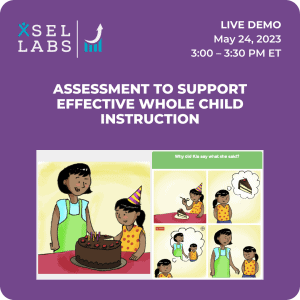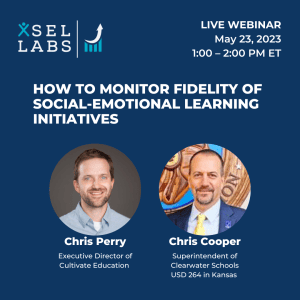School Re-Entry Challenges
Recently, I wrote about student social and emotional wellness—in particular the level of social and emotional competence students will bring to the first day of class. Understanding the level of social and emotional competence students are bringing to school re-entry can help educators work more effectively with students and teach them the skills that matter most.
Well, now it is August, and it looks like many if not most schools will be delivering classes remotely or partly remotely, which educators, parents, and others agree is sub-optimal. One of the challenges posed by remote instruction is how to assess student social and emotional competence so that educators know where to start.
To get a handle on where students are starting the school year requires a way to assess student social and emotional competence. And here is the challenge: If students are at home, how can educators assess students’ incoming social and emotional status? Teacher rating scales will be problematic because teachers won’t have regular opportunities to observe students. Self-report surveys are, in general, not very well-suited to assessing teachable competencies.
How to Assess Social and Emotional Competencies Remotely
So how can educators, faced with engaging in remote instruction, quickly get a handle on student social and emotional competence?
Here is one way: xSEL Labs’ social and emotional competence assessment, SELweb, can be completed anywhere there is a computer with a web-browser and an internet connection. Most of the time, that includes home.
Students log in and interact independently with a series of tasks designed to assess social and emotional competencies. SELweb is a CASEL-aligned performance-based direct assessment of social and emotional competencies students need to participate in school and be successful adults, including:
- Self-awareness (how well students know their own strengths and weaknesses),
- Self-management (how well students can manage their emotions),
- Social awareness (how well students understand others’ emotions and perspectives), and
- Relationship skills (how well students can solve social problems).
Because SELweb is a direct assessment in which students demonstrate what they know and can do, unlike surveys, it is not susceptible to biased responding.
How to Do Remote Assessment (Right)
You might wonder whether SELweb is reliable and valid when administered at home. Two main factors that affect assessment quality at school should also be considered in the home learning environment.
- A noisy, busy, or otherwise districting environment interferes with children’s ability to focus on the assessment.
- In school children complete the assessments independently. Well-meaning parents could unintentionally influence children’s responses if they assist children while they compete the assessment.
To minimize the negative impact of these factors on student performance, we recommend:
- Communicating to parents what the SEL assessment is and how the data are going to be used. The more parents understand that students will not be graded or labelled based on their performance, and that there are no high stakes attached to it, the less they may be tempted to assist students.
- Providing parents with instructions for administering the assessment that specify the amount of time needed, the need for a space free of distraction, and the need for children to complete the assessment independently.
- Where possible, monitoring students remotely (via Zoom or similar tool) while they are competing the assessment at home, to confirm that children are working in a distraction-free environment and that parents are not assisting students.
- In the event that score reliabilities are lower from home administration, which is the new reality for all remote learning, it will be prudent for educators to focus on results aggregated at the classroom level and higher, and to interpret individual student scores with a proverbial “grain of salt.”
We believe that if these steps can be taken, the assessment will perform well and results from home administration will be comparable to results from school administration. As the new year starts, and our current partners undertake home administration, we will analyze the data to confirm that the assessment is performing as designed.
If you are looking for a quick and engaging way to get a handle on student social and emotional wellness at the beginning of the school year, whether students are at school or not, please let us know. We’d love to help you.



